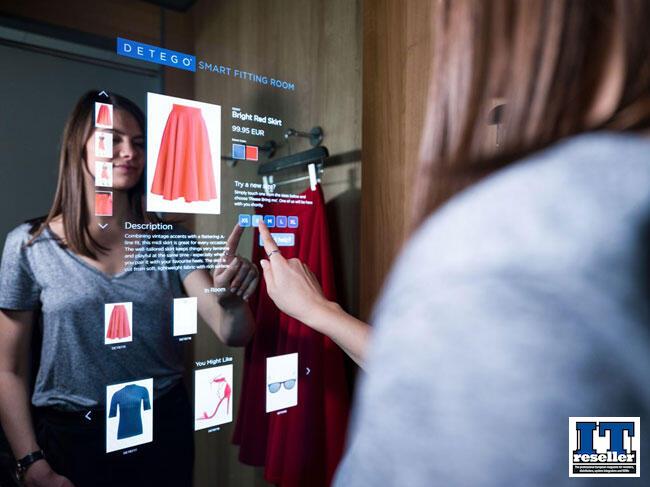Detego, a UK retail software vendor which has digitally connected nearly two billion items of clothing and footwear, has released a report detailing the most popular IoT strategies that retailers are adopting to more accurately monitor the movement of goods and better understand consumer behaviour.

These include the increasing use of RFID tags fitted on every product or label (particularly in fashion), digital assistants or chatbots to offer assistance on customers' smartphones, and staff being armed with wearable technologies for up-to-the-minute information on exact stock requirements and customer preferences.
Detego has earmarked various strategies and how best to use a range of emerging IoT technologies in a new whitepaper that aims to help retailers understand the concepts and benefits. Many of these latest technologies - such as automated self checkouts (as used by Amazon Go); or Detego's smart fitting rooms that utilise RFID sensors and interactive screens - are aimed at giving consumers greater ease-of-use and self-service options to improve the overall shopping experience (particularly in stores), forging closer ties to some of the more successful techniques spearheaded by online retail (such as personalised product recommendations; article availability checks; links to social media and product reviews; or omni-channel services like click and collect).
Connected technology gives real-world objects like merchandise a digital presence that can be closely monitored and analysed. In order to integrate the customer into this picture, there are numerous technologies available: from simple footfall counters to camera-based systems, WiFi or Bluetooth tracking. The main objective is to get more insights on customers and their behaviour to align customer service, adjust the product range and ultimately increase revenues.
Thanks to retailers keeping track of inventory and consumer preferences much more accurately using IoT and AI self-learning systems, fewer markdowns and lost sales will have a positive impact on the bottom line. IoT sensor technology (for instance, using RFID ceiling readers) allows retailers to test product placements in stores and see which articles get selected or tried-on most. Retailers can even offer customers the role of being a designer, personal shopper or trend scout, as another means of engagement and getting consumers to share more information via social media channels.
"In today's digital age, customers have power over brands. This is a strong reason why retailers should consider bringing IoT into their stores," says Dr. Michael Goller, CTO at Detego. "IoT technologies will mean shortened waiting times, better consumer engagement, higher sales conversions and more satisfied customers."
Five of the most popular IoT technologies and IoT-enabled services being adopted by retailers today
RFID - thanks to tiny radio-frequency identity (RFID) tags attached to every item and the real-time monitoring of articles from warehouse to store using connected devices, retailers can achieve near hundred percent inventory accuracy.
Digital assistants or chatbots - automated, interactive responses to customers' enquiries offering numerous "chat" options.
Personalised product recommendations – tailored recommendations or offers based on a customer's browsing history and offering additional advice or styling tips.
Wearables - staff wearing iWatches can immediately be alerted to bring any requested items, showing an image of the desired article and where to find it.
Smart fitting rooms - digitally connected touchscreens allow customers to browse through collections and request other sizes or complementary ranges be brought directly to them or sent to their home

Add a Comment
No messages on this article yet